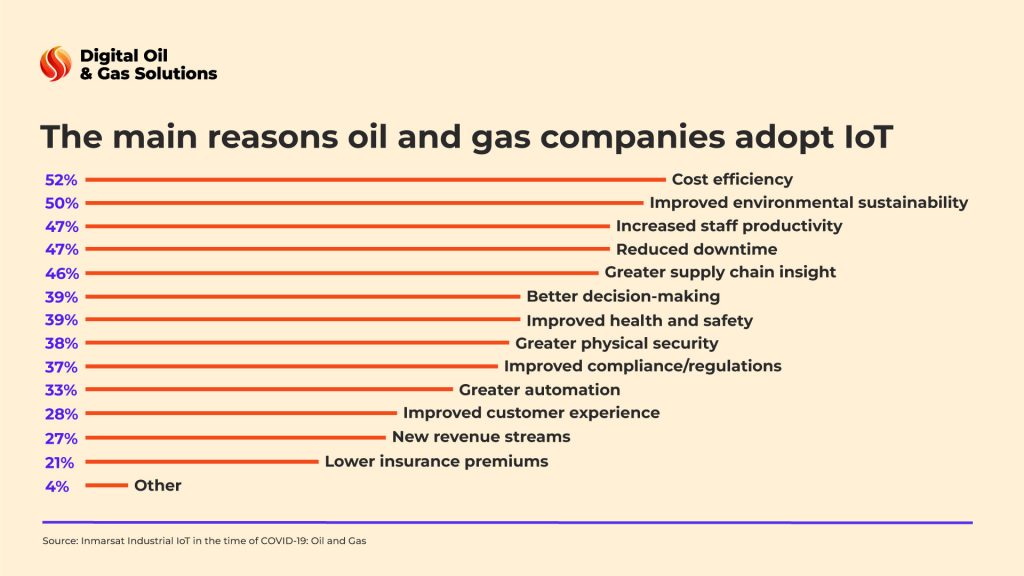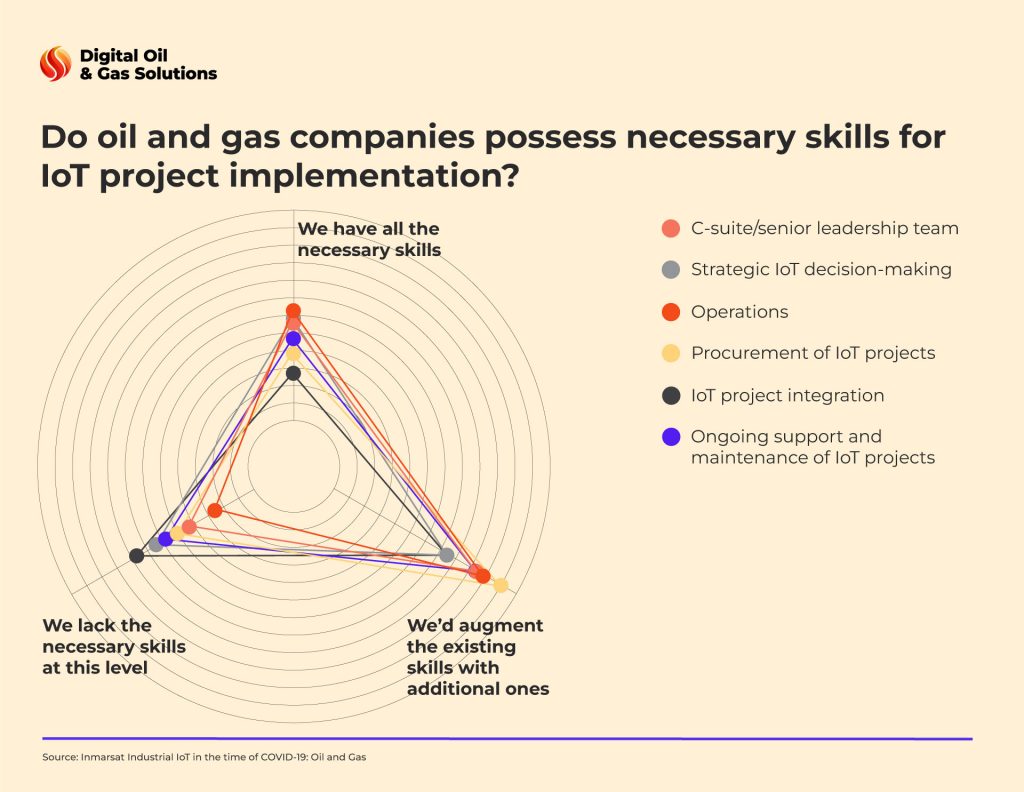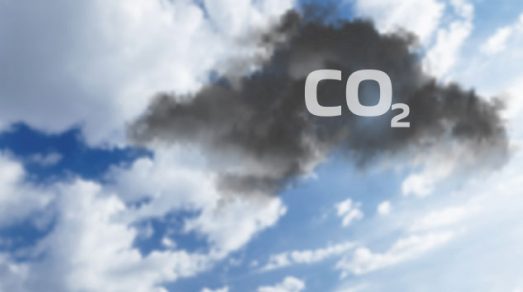From challenges to new tech-powered remote opportunities
The pandemic has disturbed normal workflows with lockdowns and travel bans. These restrictions have hindered or even precluded on-site surveys and resulted in massive delays affecting projects in the oil and gas industry across the globe. The adoption of digital technologies for the remote survey was an inevitable step for organizations to address crucial pandemic-caused challenges and accelerate the drive towards a more sustainable business.
The ability to perform online inspections and assurance provides industry players with benefits far beyond just a quick-fix solution to the pandemic. So, why will oil and gas companies opt for remote survey technologies in the future? Let us explain.

1. More precise information
Relying on tech solutions for remote inspections allows you to collect more accurate data continuously without much supervision. Industrial IoT sensors combined with AI-enabled cloud data processing tools ensure real-time readings from all your assets and even the most distant ones. All those insights can be used for diagnostic and predictive analytics for better planning and decision making. Additionally, with this information at hand, you can detect potential issues and get more data from those areas for predictive maintenance and downtime prevention.
2. Safer working conditions
With IoT devices, you can eliminate working in dangerous environments and safeguard every worker involved in the inspection. Connected sensors continuously monitor the operating conditions of pumps and pipelines, delivering real-time updates on such critical indicators as tubing pressure and temperature and sending alert notifications in case of emergency. By doing this, it allows you to prevent breakdowns, reduce the risk of accidents, and ensure workforce safety. Moreover, since the coronavirus pandemic is still a fact of life, remote survey service contributes to the protection of your employees’ health by following COVID-19 safety measures and social distancing requirements.
3. Improved time and cost-effectiveness
Remote survey and monitoring ensure considerable cost and time savings. Sensors embedded in critical equipment, oil pumps, and facilities let you detect inefficiencies before they cause downtime and financial losses. Online tracking of all the wells simultaneously provides important data like tubing pressure, temperature, flow rate, and tank level, no longer requiring individuals to spend hours traveling to sites to collect the readings manually. Meanwhile, online analytics platforms allow you to monitor wells’ output regularly from anywhere, lowering your travel expenses.
4. Better ecological future
Decarbonization and net-zero commitments are among the biggest areas of concern for oil and gas executives. Performing audits remotely lets you reduce your carbon footprint by avoiding emissions related to traveling or equipment malfunctions. Furthermore, digital technologies offer oil and gas companies the opportunity to be proactive in energy waste disposal, CO₂ storage, and emission reduction. IoT monitoring technology helps cut down energy consumption during unproductive periods and prevent pipeline leaks, while AI algorithms predict probable carbon emissions.
5. Improved operational stability
By switching to the remote survey concept, organizations get actual data about real-time asset performance and daily functional insights to maintain efficient and secure operations. Smart sensors provide operators with crucial equipment variables to anticipate and prevent potential issues. Why is this important? Preventive maintenance helps to future-proof business by lowering repair expenses, extending equipment life span, and improving employee safety. Additionally, the collected data may be used for more precise production planning and forecasting.
To sum up, remote survey technologies guarantee operational stability and business continuity so you can focus on building strategies to grow your business, secure investments, and position your company for success.
How the procedure of remote technical assurance is carried out today
Before the new normal, engineers would go for inspection rounds every one or two weeks. They used to check site conditions, wellheads, flowlines, tanks, process equipment, and other risk factors. If a problem was detected, they would report to the operations group and wait for further instructions.
Today, automation and IIoT tools take care of most of these processes. Intelligent sensors collect and provide all the critical metrics and parameters of your facilities in real-time, eliminating the need for on-site surveys. This helps track any changes in equipment conditions and respond immediately. Moreover, when such IT products as Scada-Lite are augmented with cloud computing, AI, and ML-based analytics, they allow companies to predict their production and be notified of any potential problems.
When surveys are mostly automated, staff training sessions on technology application and management become inevitable. Take time to explain potential benefits and quick wins to build trust and confidence. By doing so, you will facilitate employees’ onboarding and help them contribute to your enterprise-wide digital transformation. Finally, make sure to get your workforce and stakeholders on the same page by communicating business plans and IT strategies to introduce remote survey technologies and other future innovations seamlessly and successfully.

Securing the future with high-end remote survey technologies
The fact that remote inspection and monitoring will tremendously benefit the oil and gas industry in the future has emerged as a critical lockdown finding. The ability to connect all the equipment, processes, and data gives companies unmatched visibility, control over their operations, and actionable insights to weather any potential crisis. Though switching to remote inspections requires careful planning and extensive tech expertise, it is well worth the effort. If your team doesn’t possess the necessary skills, we advise engaging a reliable technical partner to ensure smooth implementation and help you get the most value out of your digital investment.






